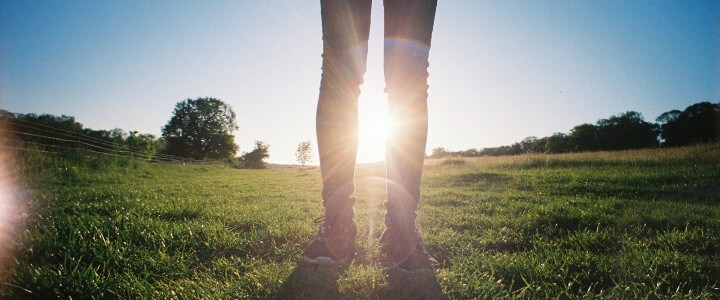The Science Behind the Benefits of Green Exercise for Older Adults
You’ve heard time and again that regular exercise is essential for a healthier, happier life. But did you know you could amplify these benefits by simply taking your workout outside?
Green exercise, which combines physical activity with time spent in nature, is gaining recognition for its unique holistic advantages. The benefits of green exercise for older adults stem from the interaction between body, mind and environment. If you’ve ever questioned why a stroll in the park feels so rejuvenating afterward, here’s why.

The Science Behind Green Exercise
Green exercise involves engaging in physical activities while in the great outdoors. The movement draws inspiration from several well-recognized scientific concepts that draw a correlation between the physiological and psychological advantages of exposure to nature. They including:
- Biophilia hypothesis: This principle suggests humans have an innate affinity with nature and other life forms. Exercising in natural settings may trigger positive emotions that reduce stress, improving mental well-being.
- Attention Restoration therapy (ART): ART posits that nature has a stimulating effect on the brain. Therefore, when you engage in green activities, your mind experiences less mental fatigue, higher concentration and better cognitive capabilities.
- Stress Reduction Theory (SRT): SRT promotes the calming effect of nature on the autonomic nervous system — nerves that regulate involuntary body processes like heartbeat, digestion and breathing. This concept implies that exercising outdoors may lower cortisol levels and blood pressure, effectively alleviating stress and anxiety.
- Environmental psychology: Emphasizes the strong connection between humans and their surroundings by emphasizing the powerful influence of natural settings on behavior, emotions and overall health.
Benefits of Green Exercise for Older Adults
The natural environment enhances the effects of exercise, offering benefits that indoor workouts may not provide.
Promotes Mental Well-Being
People who engage in outdoor exercise report lower levels of stress compared to those who exercise indoors. You’re also more energetic after the workout.
The natural world’s sights, sounds, and smells induce relaxation and serve as an effective mood-booster. This is thanks to nature’s calming effects and the endorphins released during physical activity. Recommending physical activities in green spaces to older persons who might be experiencing chronic stress, depressive disorders or social isolation.
Like exercise, exposure to diverse natural stimuli sharpens the mind, enhancing cognitive capabilities. These neuroprotective benefits are linked to better focus, memory and problem-solving skills.
Regular exercise in a natural setting has been found to stimulate neurogenesis — the growth of new brain cells. The process is essential in preventing cognitive decline as you age.
Boosts Physical Health
The advantages of green exercise for older people also extend to physical health.
- Improves cardiovascular health: Regularly exercising outside helps strengthen the heart by regulating blood pressure and improving circulation.
- Increase muscle strength and balance: Moderate-intensity physical activities like hiking and dancing build and tone muscle, giving you more strength.
- Encourages vitamin D absorption: Sunlight exposure during outdoor activities promotes vitamin D synthesis, essential for bone health and immune function.
- Boosts bone density: Weight-bearing workouts, such as brisk walking, contribute to stronger bones. This reduces susceptibility to age-related bone conditions like osteoporosis.
- Enhances physical stamina: The uneven terrain of the great outdoors challenges your body in ways that treadmills and stationary bikes do not. This promotes muscle strength, balance and coordination, which are vital for maintaining independence as you age.
Only 40% of U.S. adults meet the 150 minutes of weekly recommended physical activity. Most experts propose merging enjoyable activities with exercise to encourage working out. Engaging in fun physical activities keeps you young at heart. Also, consider taking your grandkids and pets along to enhance the experience.
Encourages Social Interaction
One of the most significant downsides of aging is the social isolation that comes with it. The “kids” are all grown up and have moved out. They are engrossed in their lives and cannot afford to spend as much time with you as they did when they were younger and living at home. The loneliness is much greater if you are a single parent.
Social isolation predisposes people aged 65 and older to developing debilitating non-communicable diseases, including:
- Chronic stress
- Depression
- Anxiety
- Heart disease
- Hypertension
- Obesity
- Cognitive disorders, including dementia and Alzheimer’s Disease
- Insufficient sleep syndrome
You’re also likely to sleep poorly, skip exercise, make poor food choices and engage in risky behaviors like chain smoking that further deteriorate your health.
Being outdoors encourages you to connect with other people. Most out-of-the-house physical activities promote group participation. It helps cultivate friendships, making you feel connected to your community. This effectively alleviated feelings of loneliness and isolation. It fosters a sense of belonging and purpose, which is crucial for overall well-being.
Types of Green Exercise for Older Adults
There are many ways to incorporate green exercise into your daily life. Popular options include:
- Walking
- Nature walks and hikes
- Gardening
- Cycling
- Tai Chi
- Health qigong
- Outdoor yoga
When picking an activity, consider your physical abilities, interests and availability to make the right choice.
Tips for Getting Started
If you’re new to green exercise, start slow and pick activities that match your fitness level. Begin with short walks or light gardening and gradually increase the intensity and duration as you become accustomed to your new hobby. Wear appropriate clothing and stay hydrated throughout.
However, consult your doctor if you’re receiving treatment for an underlying ailment. They will assess your case and advise you on how best to proceed. It’s super helpful to set goals and track your progress to visualize your wins. Join a wellness group to keep you motivated and engaged in your new routine.
Get Better Health with Green Activities
The benefits of green exercise for older people are numerous. From enhancing mental well-being to strengthening social ties, outdoor activities give you a holistic approach to health. Discover the transformative power of nature on aging by participating in green activities. Your backyard, local parks and nature trails are waiting to become your new favorite gym.




















